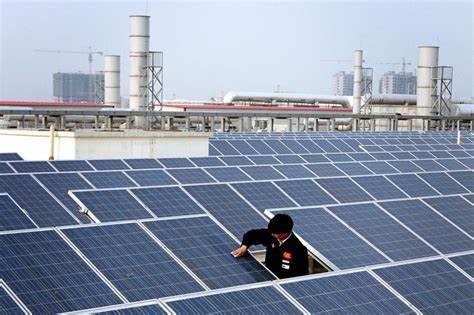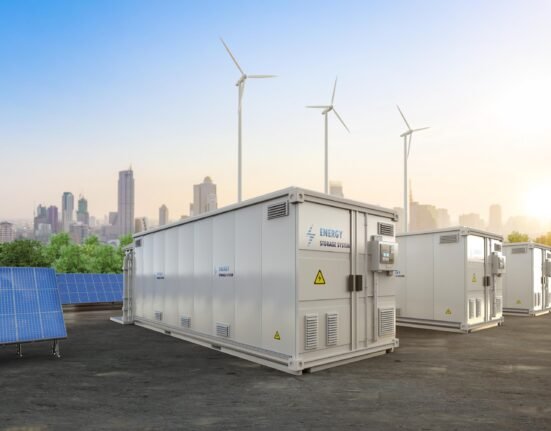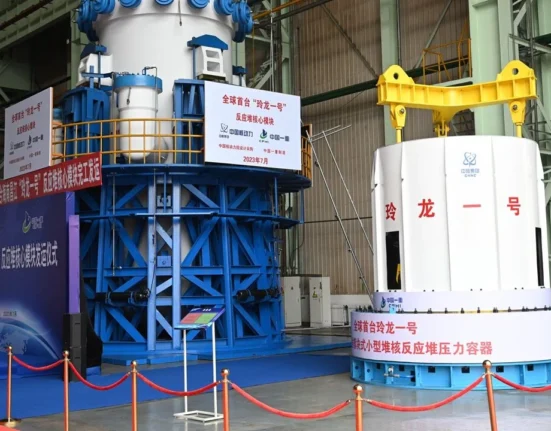China has long been one of the world’s leading players in renewable energy, and its achievements continue to exceed expectations. Surpassing the 1,200 gigawatt (GW) mark in installed renewable energy capacity, six years ahead of its target, is not just a milestone; it’s a clear indication of China’s aggressive commitment to transforming its energy landscape. This progress was not achieved by coincidence, but through years of careful planning, robust policy initiatives, and unparalleled investments in clean energy technologies. As the world’s most populous country and one of the largest energy consumers, China’s success in renewable energy expansion has far-reaching implications not only for its own development but also for the global fight against climate change.
The push for renewable energy in China has largely been driven by a combination of environmental concerns, economic development strategies, and the need for energy security. For years, China has been heavily dependent on coal to meet its growing energy demands, contributing to some of the world’s highest carbon emissions. Recognizing the unsustainable nature of this model, the Chinese government introduced sweeping reforms and policies designed to facilitate a transition toward cleaner, renewable sources of energy. Central to this transition is solar, wind, and hydropower — all of which are growing rapidly in terms of installed capacity, technological sophistication, and cost-effectiveness.
Solar energy has taken center stage in China’s renewable energy revolution. As the world’s largest producer of solar panels, China has led the charge in making solar power a mainstream and economically viable energy source. The country’s strategic investments in solar panel manufacturing and large-scale solar farms have not only driven down the cost of solar technology but also placed China at the forefront of a global market that is increasingly shifting toward renewable energy. Today, China is home to some of the largest solar power plants in the world, including those in the deserts of Xinjiang and Inner Mongolia, where vast stretches of land are harnessed to generate solar power at a cost that is among the lowest globally. This massive expansion has created a ripple effect, lowering the cost of solar technology worldwide and encouraging other countries to follow suit.
Wind energy has also seen tremendous growth in China, with the country now having some of the largest onshore and offshore wind farms. The rapid development of wind energy has been aided by favorable government policies that encourage investments in both onshore and offshore wind projects. The country’s extensive coastlines, combined with its strong wind resources, make it ideally suited for offshore wind energy projects. With massive installations in regions such as the Bohai Sea and the South China Sea, China is also making significant strides in offshore wind technology, positioning itself as a global leader in this area.
While solar and wind energy have garnered significant attention, hydropower remains a cornerstone of China’s renewable energy infrastructure. The country is home to the world’s largest hydropower plants, including the Three Gorges Dam, which has a capacity of more than 22,000 megawatts. However, as China expands its renewable energy capacity, it has also come under scrutiny for some of the environmental and social consequences of large hydropower projects, including the displacement of local communities and the disruption of ecosystems. Despite these concerns, hydropower continues to play a significant role in China’s energy mix and will likely remain a key player in the nation’s renewable energy strategy.
China’s achievements in renewable energy are not solely the result of government policies and investments. The private sector has played a crucial role in driving innovation and bringing new technologies to market. Companies in China’s renewable energy sector, particularly those involved in solar panel manufacturing, wind turbine production, and energy storage, have become global giants in their respective industries. These companies have been able to achieve economies of scale that make renewable energy more affordable and accessible to the global market. As China’s renewable energy industry continues to grow, these companies will likely play an increasingly important role in advancing clean energy solutions worldwide.
Beyond the direct impact of renewable energy on China’s energy landscape, the country’s success is having a profound effect on the global market. By lowering the costs of solar panels, wind turbines, and energy storage systems, China has made renewable energy more accessible to other nations, particularly developing countries that might otherwise struggle to afford clean energy technologies. This is particularly important as the world faces an urgent need to decarbonize its energy systems and reduce greenhouse gas emissions to combat climate change. As China continues to expand its renewable energy capacity, it is helping to create a global market for green technologies, facilitating the transition to a more sustainable energy future.
Despite these successes, the road ahead for China’s renewable energy sector is not without its challenges. As renewable energy becomes an increasingly larger portion of China’s energy mix, the country faces significant technical and logistical challenges in integrating these intermittent energy sources into the national grid. Solar and wind power are variable, and their generation is not always aligned with peak demand. To address this issue, China is investing heavily in energy storage technologies, such as lithium-ion batteries, and in grid modernization efforts to ensure that the power generated by renewables can be stored and distributed efficiently. Additionally, the development of smart grid technologies that can better match energy supply with demand will be crucial for China to fully realize the potential of its renewable energy capacity.
Energy storage is one of the most critical aspects of ensuring the long-term viability of renewable energy in China. The country has been actively working on developing large-scale energy storage solutions to ensure that power generated from solar and wind sources can be stored and used when demand is high, or generation from renewable sources is low. This is particularly important for ensuring the reliability and stability of the power grid as more renewable energy is added to the mix. Investments in advanced battery technologies, such as solid-state batteries and flow batteries, are expected to play a key role in addressing these challenges.
China’s renewable energy push also aligns with its broader climate goals, particularly its pledge to peak carbon emissions by 2030 and achieve carbon neutrality by 2060. Surpassing the 1,200 GW renewable energy target six years ahead of schedule is a major step toward meeting these goals. By diversifying its energy mix and reducing its reliance on coal, China is not only reducing its carbon footprint but also improving its energy security. The ongoing expansion of renewable energy will continue to help the country reduce its dependence on imported fossil fuels, thus enhancing its energy independence.
As China moves toward its long-term climate goals, it faces the dual challenge of ensuring that its renewable energy expansion is both economically viable and environmentally responsible. The country’s rapid growth in renewable energy has raised concerns about the social and environmental impacts of large-scale projects, including the displacement of communities and the degradation of ecosystems. Balancing the need for energy development with the preservation of natural resources and the protection of vulnerable communities will remain a critical issue as China continues to expand its renewable energy capacity.
Looking to the future, China’s renewable energy sector is expected to continue growing at a rapid pace. With technological advances, increased efficiency, and a growing global market for clean energy, China is well-positioned to remain a leader in the global renewable energy transition. Its success in surpassing the 1,200 GW target six years ahead of schedule has set a high bar for other nations and demonstrates the power of policy leadership, technological innovation, and public-private partnerships in achieving ambitious environmental goals. China’s ongoing commitment to renewable energy will not only help meet its domestic needs but also contribute to a more sustainable energy future for the entire world.
Get the latest updates on Energy, Construction, Engineering, and Cryptocurrency. Join us on WhatsApp or Telegram for real-time news. Have a report or article? Send it to report@epci.ng.
Follow us on X (Twitter), Instagram, LinkedIn, and Facebook for more industry insights.







Leave feedback about this